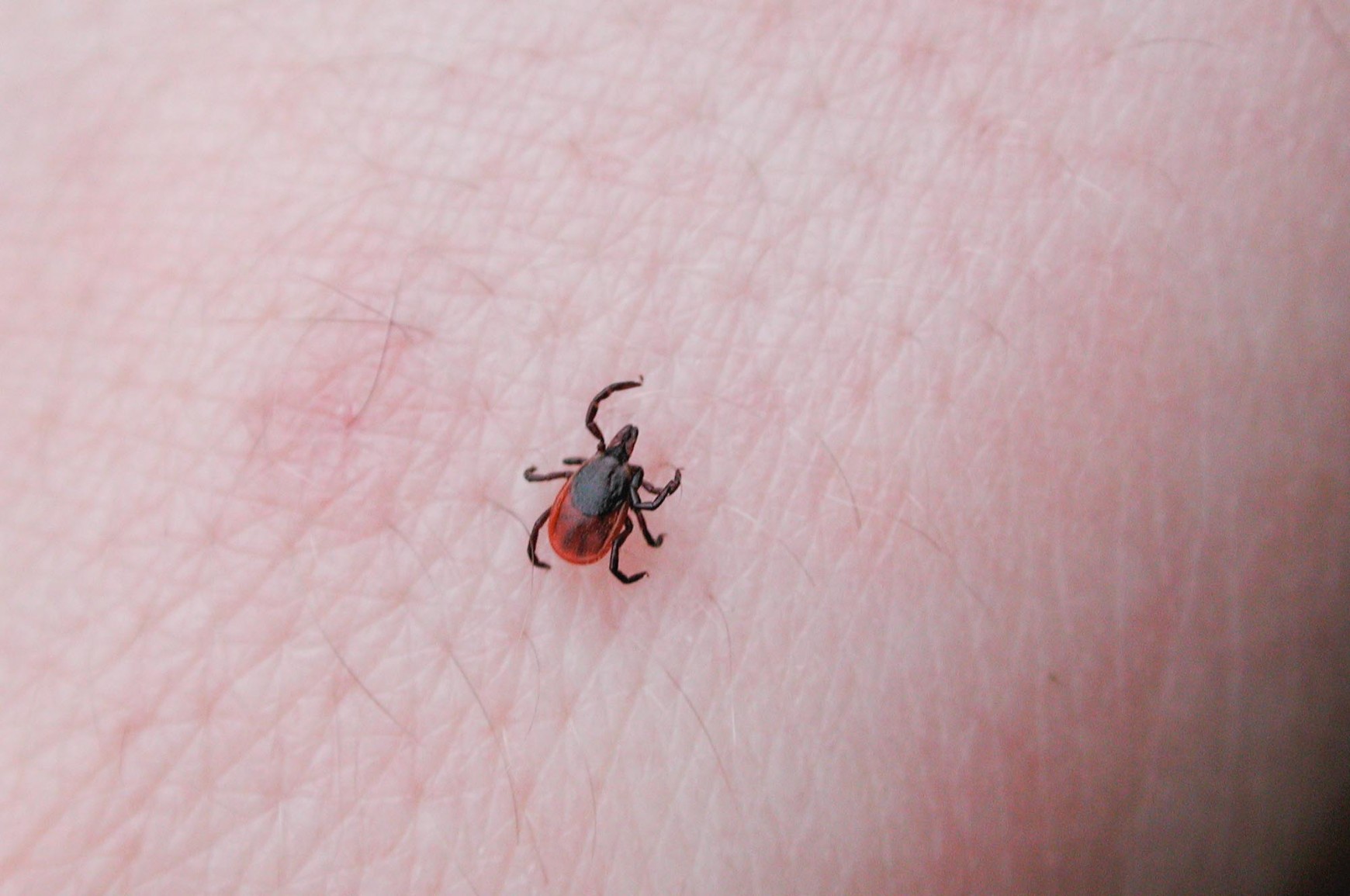Problem
Ticks are a common pest that are found at an increasing rate in lawns, here in Ontario. Ticks can potentially put your family or pets in harm’s way. The risk comes from their ability to carry disease and can go unnoticed for several days after attaching to a host. Ticks can transmit a large variety of different pathogens, including Lyme disease.
Adults are about a ¼ inch long with eight legs and are reddish-brown with irregular yellow and white markings. Females are slightly larger than males and can grow up to ½ an inch long.
Solution
There are steps you can take to decrease the risk of tick bites. Using a combination of strategies to both reduce the tick population in your yard as well as prevent bites on your body is the best way to keep yourself and your family safe.
Mowing properly: Keeping your lawn at a height of about 3” will help keep ticks away. Longer grass gives a place for ticks to hide.
Avoid overwatering: Ticks prefer warm and moist environments, so do no give your lawn too much water, 1” per week is sufficient.
Try to minimize shady areas: If possible, prune trees and trim hedges to maximize the amount of sun on your lawn. Also, keep your lawn free from debris such as piles of leaves or compost. The grass under these piles cannot dry properly and can allow for more ticks. Ticks like to stay in shady areas, so allowing more sun to hit your lawn can reduce their numbers.
There are also some steps you can take when going outside if there is a risk of a tick bite.
Use repellent: Use a tick repellent before going outside to minimize the chances of getting a bite.
Proper clothing: Keeping exposed skin to a minimum and taking measures such a tucking pants into socks can also help reduce risk.
If you get bitten by a tick, please refer to the Government of Ontario website for more information on Lyme disease and how to remove a tick. You can also take the tick to your doctor, health care professional or local public health unit for testing.






